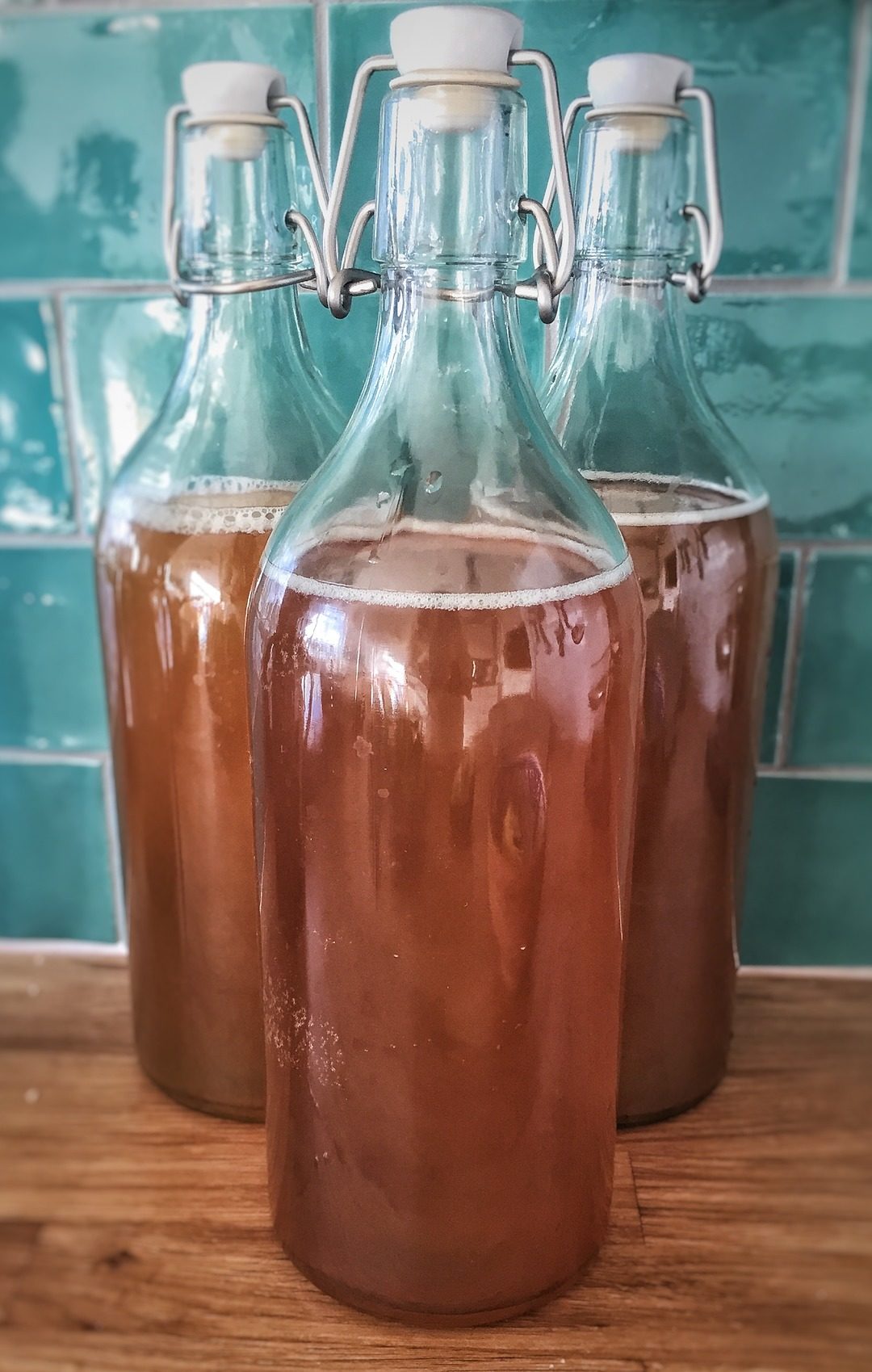Fermented probiotic foods are packed with beneficial bacteria. Probiotics are often called the microbiome or friendly bacteria that live in our digestive tract and are essential for nutrient absorption and immune health.
Reduced gut bacteria may play a role in irritable bowel syndrome and digestive disorders, skin conditions such as eczema, increased cold and flu, candida overgrowth and autoimmune conditions.
Probiotics can be taken as a supplement, which may be appropriate for those treating specific conditions. However I believe in food as medicine, and therefore think the best way to maintain a healthy gut flora is by eating fermented foods.
What are Probiotic Foods?
Probiotic foods are those that are fermented. Although fermented foods are having a bit of revival lately, the act of fermenting foods isn’t new. Most cultures have their own fermented staples; German sauerkraut, Korean kimchi, Japanese miso.
The earliest evidence of fermented foods and beverages dates around 7000–6600 BC. Techniques developed from a necessity to keep foods for long periods without the use of refrigeration or canning.
Lacto-fermentation is the most common method. This is a process whereby lactic acid bacteria (mainly Lactobacillus species) converts sugar into lactic acid, and acts as a preservative. Salt plays an important role in the process by preventing the growth of undesirable pathogenic micro-organisms.
I like to think of fermented foods as nature’s probiotic supplements. If you’re new to fermented foods, introduce them slowly and work your way up to 2 serves per day. If you introduce too much too fast, it may cause some bloating. Here are my top 7 probiotic foods to get you started.
 1. Kombucha
1. Kombucha
An effervescent, slightly sweet, fermented tea drink originating from China 2000 years ago. It’s available in health shops and at farmers markets, but Kombucha is also really easy and cheap to make yourself.
It’s produced by adding a SCOBY (symbiotic colony of bacteria and yeast) to sweet green or black tea. The yeast feeds on the sugar to produce alcohol, which is then gobbled up by the bacteria. The result is an earthy, delicious, tangy drink teaming with beneficial, friendly gut bacteria. A recent study showed kombucha has both Lactobacillus and Saccharomyces, two strains commonly found in popular probiotic supplements.
 2. Yogurt
2. Yogurt
Most of us are familiar with yogurt, it’s probably the most common fermented food in western diets. Unfortunately many of the supermarkets varieties have added sugar, artificial flavours or are low-fat. The best choice is a natural, full fat version with a high lactobacillus or probiotic content. If you’re dairy intolerant there are some tasty coconut options available in health food stores, or make your own.
3. Kefir
Kefir is a milk based, fermented drink originating from Russia. It tastes like yogurt but has a runny, drinkable consistency. You can usually find it at health food stores and farmers markets. Kefir has about 30 different strains of bacteria and yeast making it a much richer and diverse probiotic source than most commercially purchased yoghurt.
4. Miso
Miso is a fermented soy bean paste which has been a staple in the Japanese diet for millennia. Apart from beneficial bacteria, miso also provides vitamins B12, E and K, calcium, iron, potassium and choline. Look for a good quality unpasteurised miso which is organic and GMO free. Additionally, the most nutritious miso’s are fermented for 180 days or more.
Grains such as rice and barley are also used to make miso. Therefore, those with a gluten allergy/sensitivity should check the ingredients.
Miso soup makes a delicious and easy afternoon pick-me-up way. Just drop 1-2 teaspoons into a mug of boiling water, add some chopped spring onions and sea vegetables (nori or dulse work well) and voila!
5. Sauerkraut
An Eastern European staple side dish, sauerkraut, is made by fermenting shredded cabbage with various herbs for a distinctive sour flavour. It’s a great condiment to have alongside roasted meat dishes. When purchasing sauerkraut be sure to look for unpasteurised varieties. Shelf stable varieties will be void of all the live bacteria.
 6. Pickled Vegetables
6. Pickled Vegetables
Once upon a time, all pickles were naturally fermented. Unfortunately this is no longer the case. Most pickled vegetables found in supermarkets are preserved with vinegar and don’t undergo any fermentation. If they do, it’s usually also heat-treated which destroys the beneficial bacteria. Luckily, making your own pickled vegetables is really simple and the combinations are endless. I show you how here.
7. Tempeh
Tempeh is a traditional Indonesian dish of cultured, partly cooked soybeans. The beans are aged for several days with a starter culture. A white layer of fungus forms over the tempeh, binding them into a cake (I promise it tastes better than it sounds!) The result is a nutty, mushroom flavour. In addition to being a great source of probiotics, tempeh is also a great meat substitute, providing around 16 grams of protein per 85 gram serving. It’s also provides substantial amounts of calcium and iron.



